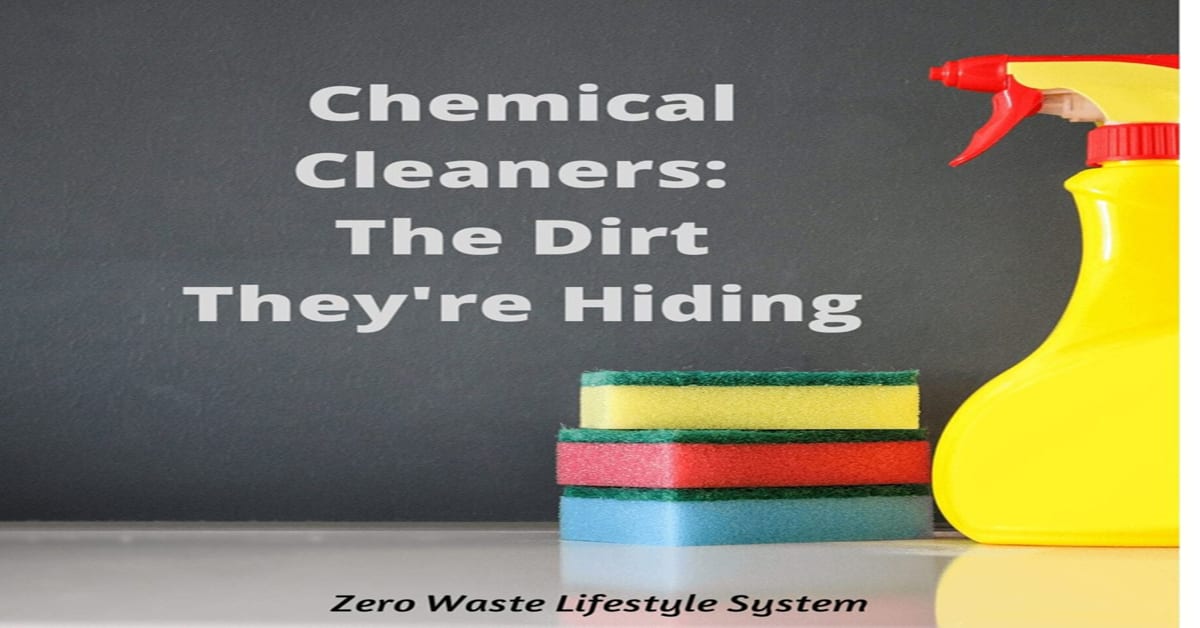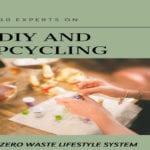We all want a clean home. The average household uses chemical cleaners on a daily basis. These cleaners are immediately available in supermarkets and convenience stores. However, given the possible dangers of chemical cleaners, it may be wiser to seek alternatives.
Here, we will take a look at the chemicals found in common household cleaners and their possible effects on people and on the environment. We will then discuss safer alternatives to these commercial cleaners as well as ways to find safer ones if they are needed.
How much do we spend on chemical cleaners?
Chemical cleaners have formed a booming industry. This makes sense as households would need to find ways to keep their homes clean. As such, several sub-markets have emerged in the industry. There is a sub-market for each kind of cleaner.
A notable sub-market is laundry detergent. Its three most common products of which are liquid, powder and pods. The sub-market is the largest and in 2019, it valued at an estimated 117 billion U.S. dollars worldwide. Consumers from the Asia-Pacific comprise the largest market for laundry detergent. The North American market alone was about 23 billion U.S. dollars in value.
Another sub-market are household cleaners. Subsumed under these are our dishwashing products and surface cleaners, the former being the most consumed product in the sub-market in 2019. Back in 2018, the detergent market valued at 2.73 billion U.S dollars in the United States alone.
From a more microscopic perspective, in 2017, the average American family spent around 40 to 50 U.S. dollars per month (around 600 U.S. dollars per year) for cleaners. The range of prices do not vary much per region because of the price consistency in the country.
How do we usually clean?
The large numbers mentioned above make some sense. After all, these products are very convenient and for the most part, are able to get job done. However, this comes at a price.
Many cleaners offer quick fixes for a great expense. For instance, if you were to find mold in the tiles of your shower stall, it is possible that you would use a mold killer, which oftentimes contains chlorine bleach. The glass door of your shower stall has some spots. To address this, you use an ammonia-based window cleaner which immediately creates toxic gas which could easily damage your lungs.
Dark Truth about Chemical Cleaners
The average consumer may presume that these common cleaners are safe. This is contradicted by studies on the chemical components of the household cleaning products. It was shown that many of the ingredients found in household cleaners are toxic to humans and the environment.
a. Toxic to humans
For almost 7 decades, 70,000 chemicals were invented and introduced to both the consumer market and the environment. Very few of these chemicals were tested for toxicity for human beings. 150 of these chemicals were connected the presence of allergens and carcinogens. One such carcinogen is NTA which is found in most laundry detergents.
These chemicals have also been associated with defects in newborns, and even psychological disorders. Young children (infants and toddlers), those who are chronically ill, and the elderly are most affected by these indoor chemicals as they spend most of their time indoors.
Dishwashing liquids cause the most number of cases of poisoning for children under six years old with over 2.1 million cases per yer. In the span of a year, there are around 2,435 pesticide poisonings. 40% of which are caused by contact with disinfectants and similar chemicals at home. The Federal Hazardous Substances Act classifies household chlorine bleaches as pesticides. These cleaners mixed with bleach contain ammonia, which produces chloramine, a toxic gas.
Asthma was once rare. Now it is being more and more common with an increase of more than 40% of cases of asthma since the 80s. Children exposed to these cleaners are at risk since their growing bodies are more susceptible to damage than an adult’s. Children less than around 13 months of age are the most vulnerable as their bodies are not yet equipped to battle the effects of toxic chemicals.
b. Environmental concerns
Cleaner sprays, floor cleaners and disinfectants often contain “Volatile Organic Compounds” (e.g. phosphorous, nitrogen, and ammonia) which are environmental hazards. These chemicals and many others may end up in our natural waters and buildup.
Laundry products usually contain phosphates which act as fertilizers. They increase the rate of growth in aquatic vegetation thereby clogging waterways. Algae then grows faster and deprive marine animals of oxygen. Too many chemical compounds are toxic to marine life.
c. No transparency about ingredients
Manufacturers of chemicals and cleaners are generally not required to disclose the ingredients in their products. To add to the blow, only 7 percent of all chemicals found in household cleaners contain complete basic toxicity information. Any information we have on cleaners is limited to warning labels found on a product’s packaging.
How do we avoid using harmful chemical cleaners?
As we have seen the dangers of these chemical cleaners, it is imperative that we discover other products we may use to clean our homes and other ways to ensure that we don’t introduce hazardous chemicals to our household.
A. DIY cleaners
You may opt to use alternatives or do-it-yourself cleaners. Vinegar, and baking soda are two good alternatives for disinfectants or deodorizers as well as other cleaners. Coconut milk is a great option for removing stains in upholstery or polishing leather. Vodka may be used as a degreaser. There are many other options out there and you wouldn’t even need to look very far from your own home.
B. Find good cleaners
Another good idea is to know what to look for when buying cleaners in the market. It would be a great idea to check the label of the product and research based on your cleaning needs.
1. Check the label
Avoid using products which insufficiently indicate the used ingredients. For products with labels, a mark of “poison” is not the only indication of danger. The EPA assigned different levels of toxicity for these cleaners based on the harm they may cause upon inhalation, being swallowed, or absorption by the skin. Signal words are used to indicate the level of toxicity.
“Danger” indicates that one must be very cautious about using because it can cause blindness, sickness or death. It is also possible that upon exposure to heat, they may explode. “Warning” indicates that it is possible to get hurt or sick, or that product is flammable. “Caution” indicates that a product may be harmful but not as harmful as products under the category of “danger” or “warning”.
Check for the presence of any of the following ingredients: ammonia, butyl cellosolve, formaldehyde, hydrochloric acid, naphtha, perchloroethylene, petroleum distillates, phenols, phosphates, sodium hydroxide (lye), sodium hypochlorite, sodium lauryl sulfate, sulfuric acid, and trichloroethane.
2. Research based on your cleaning needs.
Avoid using multi-purpose products as they often contain a mixture of chemicals which are harmful to both you and the environment. In fact, minimizing the number of ingredients used for cleaning is one of the best ways to keep your home safe from harmful chemicals. Before buying a cleaner, research on what ingredients are the best for addressing your specific cleaning needs. Those ingredients may be present or have the same effects as safer, everyday, household products such as baking soda powder.
Conclusion
For a clean home, you don’t have to use the chemical cleaners you find in stores. These cleaners often contain harmful chemicals which pose a risk for the people in your household and on a wider scale, your community. They also threaten the environment in various ways.
Opting for alternatives such as those you may find in your kitchen cabinet is safer, cheaper and possibly more effective than commercial cleaners. At the end of the day, your wallet, your family, and your environment will thank you for it.
Ultimately, shifting to a green cleaning routine, while difficult at first, will serve you better because you will keep safe from chemical hazards and help conserve Mother Earth at the same time. Go zero waste and reap the benefits of a naturally clean home and life.





2 Comments
Leave a Reply2 Pings & Trackbacks
Pingback:Veles: An Eco-friendly Cleaner - Zero Waste Lifestyle System
Pingback:4 Eco-Friendly Essential Oils For Your Mood And Home - Zero Waste Lifestyle System